Olympus 8-25mm f4 Pro review
-
-
Written by Gordon Laing
Intro
The Olympus M.Zuiko Digital 8-25mm f4 Pro is a wide to standard zoom for the Micro Four Thirds system. Announced in June 2021, it’s the first new lens launched under the OM Digital Solutions brand. Mounted on a Micro Four Thirds body, such as those from Olympus or Panasonic, it delivers a 16-50mm equivalent range in full-frame terms, taking you from ultra-wide to standard coverage, making it a very flexible walkaround option whether you’re shooting stills or filming video.
In my video review below I’ll show you how the Olympus 8-25mm f4 Pro performs for subjects near and far across the range and how it compares to rivals including the Leica DG 8-18mm f2.8-4 and Leica DG 10-25mm f1.7. If you prefer to read a written version, keep scrolling for the highlights.
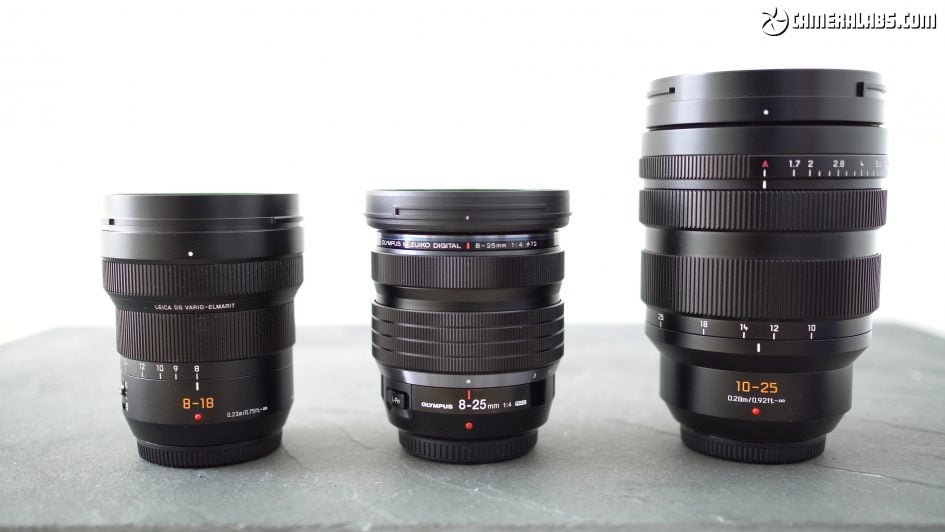
Above: First let’s look at the lens itself, pictured here in the middle, which measures 77mm in diameter, 89mm long and weighs 411g, with a 72mm filter thread. On the left is the Leica DG 8-18mm which at 73x88mm is almost exactly the same length, but a little narrower, allowing slightly smaller 67mm filters. The 8-18mm is lighter too at 315g, but both it and the Olympus 8-25 are in a similar ballpark. The 8-18mm retails at the same price as the Olympus, but as an older lens it can be discounted closer to $899. Meanwhile the Leica DG 10-25mm f1.7 on the right is unsurprisingly the heftiest of the three, wider and longer than either at 88x128mm, requiring larger 77mm filters and heavier too at 690g thanks to that bright constant aperture. It’s also the most expensive at around $1799 All three lenses are sealed against dust and moisture, but Olympus continues to be one of the few camera companies that’s confident enough to quote an IPX1 rating.
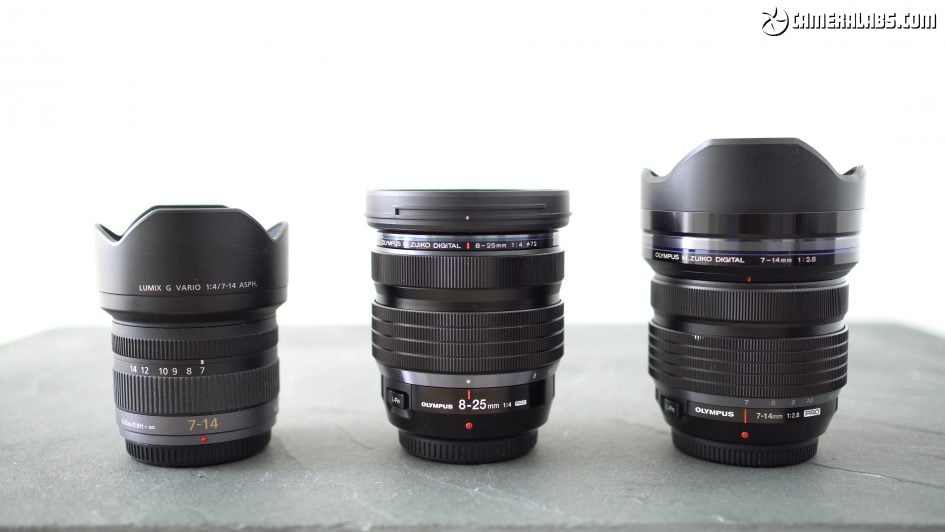
Above: Since I also have them in my collection, it would seem rude not to also show the new Olympus 8-25mm f4 flanked by the two older 7-14mm zooms, with the Lumix G 7-14mm f4 on the left and the Olympus 7-14mm f2.8 Pro on the right, both of which employ built-in petal hoods and no filter threads. Now I’ve made multiple tests of these two lenses at cameralabs.com if you’re interested, so in this particular review I’m concentrating on the three newer models.
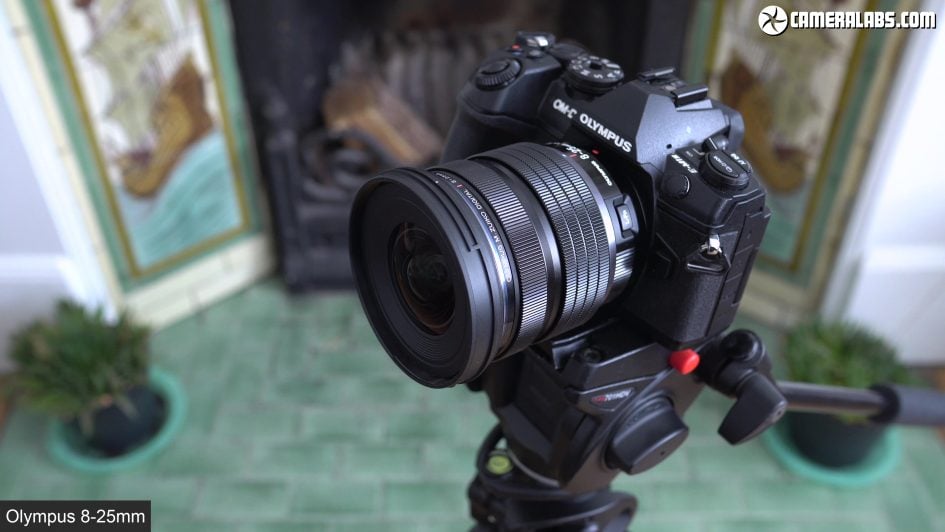
Above: In terms of style and controls, the 8-25mm looks like other models in the Olympus Pro series, but actually becomes the first in that range to employ a retracting barrel for a reduced size during transportation.
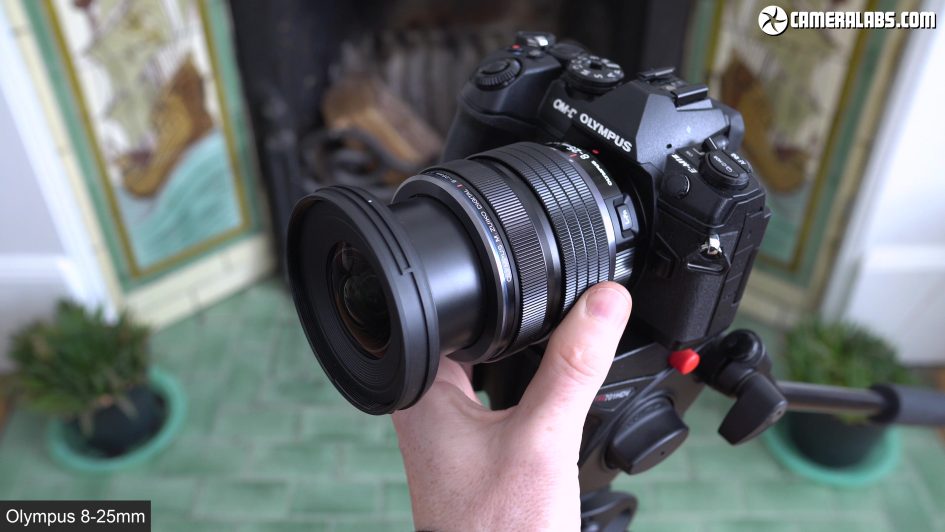
Above: So when you want to use the lens, you’ll need to twist the zoom ring from the transport position to 8mm, extending the barrel by about 25mm. When you pass into the normal operating range, there’s a mild click, but cleverly there’s a little more resistance when turning in the opposite direction which prevents you from accidentally returning to the retracted state unless you really mean to. That’s a long winded way of saying once you’re in the normal zoom range, there’s what feels like a fairly hard stop at 8mm, but a little extra push will click beyond it and let you fully retract the barrel for transportation. In use it’s quick and you don’t give it a second thought.
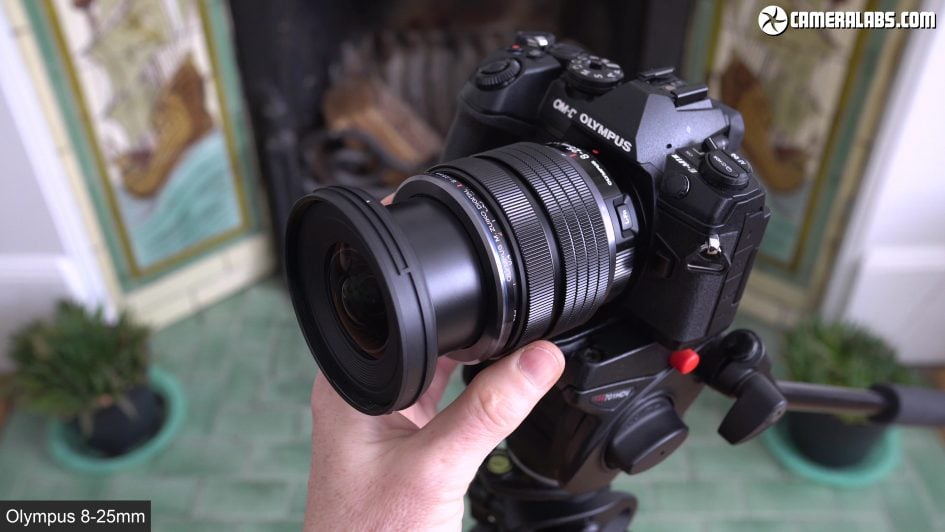
Above: Beyond the zoom ring is a free spinning motor-assisted manual focusing ring that can be alternatively pulled back towards the camera to reveal a focus distance scale with hard stops at each end. There’s also a single programmable Lens function button.
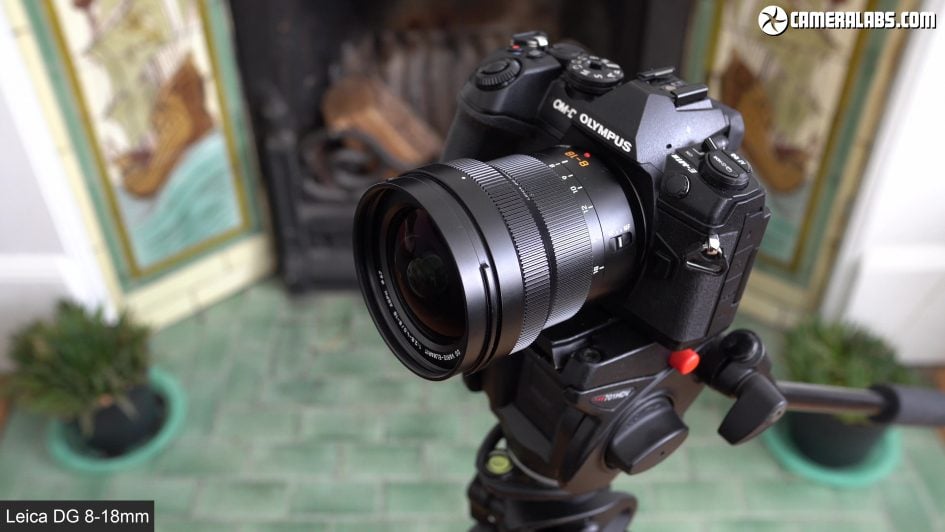
Above: In comparison, the Leica DG 8-18mm may have a barrel that moves back and forth as it zooms, but this is housed within an outer sleeve that effectively presents a fixed barrel. So it shares a similar length to the Olympus 8-25mm when that lens is retracted, but maintains this size during operation too. It also has a free-spinning manual focus ring, but no pull-back clutch or programmable function button.
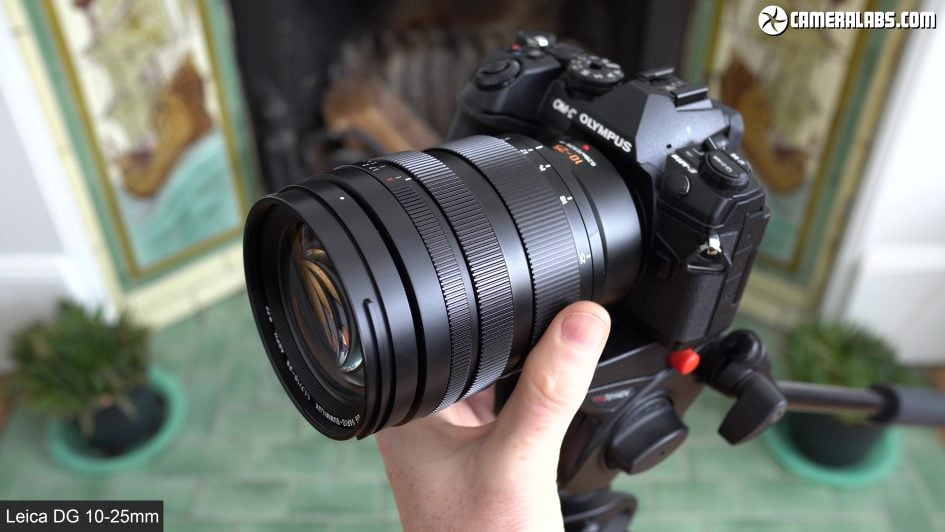
Above: And finally the Leica DG 10-25mm employs a barrel that’s shortest around the 13mm focal length, before extending by about 15mm when zoomed to the long-end of the zoom. Like the Olympus it also has a free-spinning focus ring which can be pulled back to reveal distance markings and impose hardish stops. It is however the only lens of the three here to offer a dedicated aperture ring, unusually at the end of the barrel too, although it only works on Panasonic bodies, so Olympus owners should leave it set to A for body-based control.
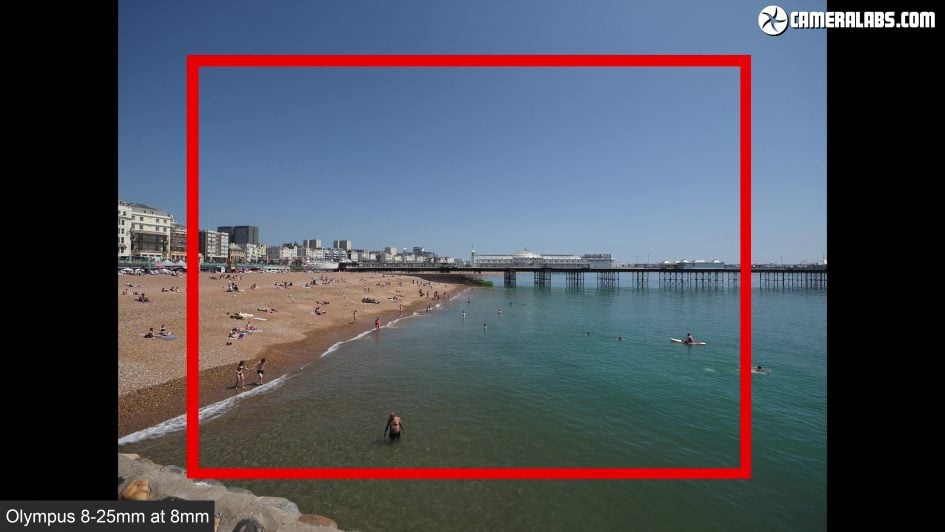
Above: Ok now for coverage, starting at the wide-end of each lens, so here’s the Olympus 8-25mm at 8mm, where it delivered essentially the same field of view as the Leica DG 8-18mm at 8mm. Don’t always assume lenses that quote the same focal length actually capture the same field of view as there can be variations. Meanwhile the outer edge of the red frame represents the slightly tighter coverage of the 10-25 at 10mm, so you can see how much more 8mm will get you.
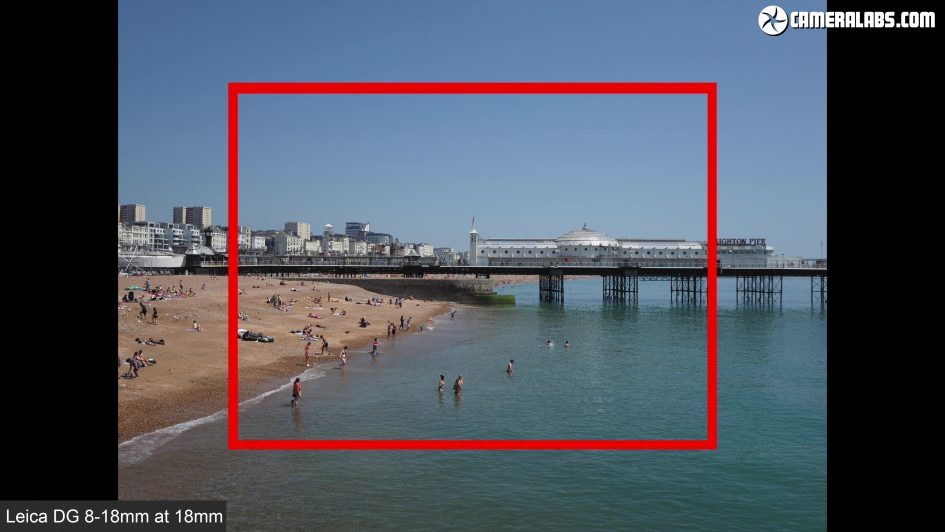
Above: Now for the long-end of each lens, and this time I’m showing you the field of view of the Leica 8-18 at 18mm, with the coverage of the Olympus 8-25 at 25mm represented by the outer edge of the red frame. So while 25mm reaches standard coverage, the 18mm stays in wide-angle territory. So by taking you from ultra-wide angle to standard coverage, the Olympus 8-25mm delivers the broadest range of the three lenses here, making it the most flexible, and for many people, a practical general purpose option.
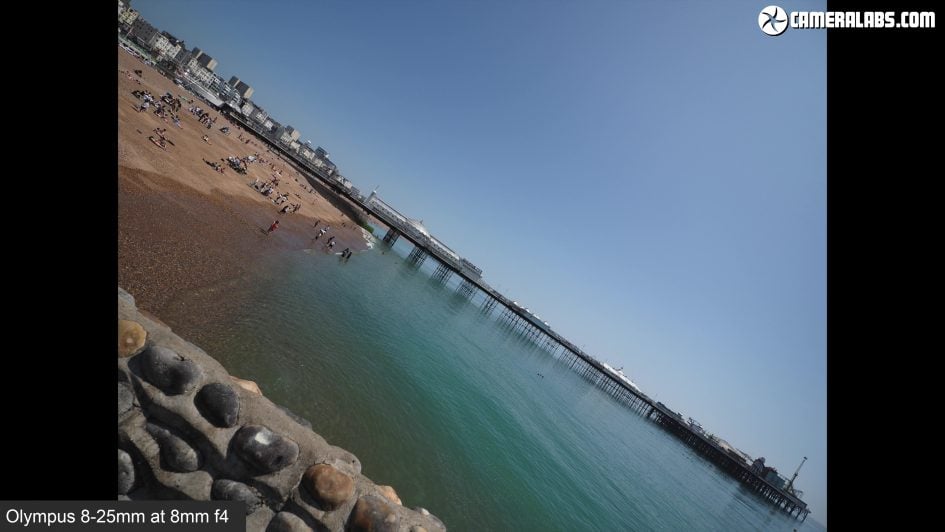
Above: To find out if that increased range comes at the cost of performance I angled my landscape scene so that details run into the far corners and photographed it with the Olympus 8-25mm on an EM1 Mark II at all apertures and both ends of the range. I repeated my tests with the Leica DG 8-18mm and 10-25mm, but annoyingly my 8-18 sample didn’t perform as well as previous tests under close inspection, so I’ve had to make this first comparison a head to head between the 8-25 and 10-25. If you’d like to see how the 8-18 should perform, check out my original Leica DG 8-18mm review where I pitched it against the 7-14 lenses, or my Leica DG 10-25 review which includes direct comparisons against a better-behaved copy. Links in the description.
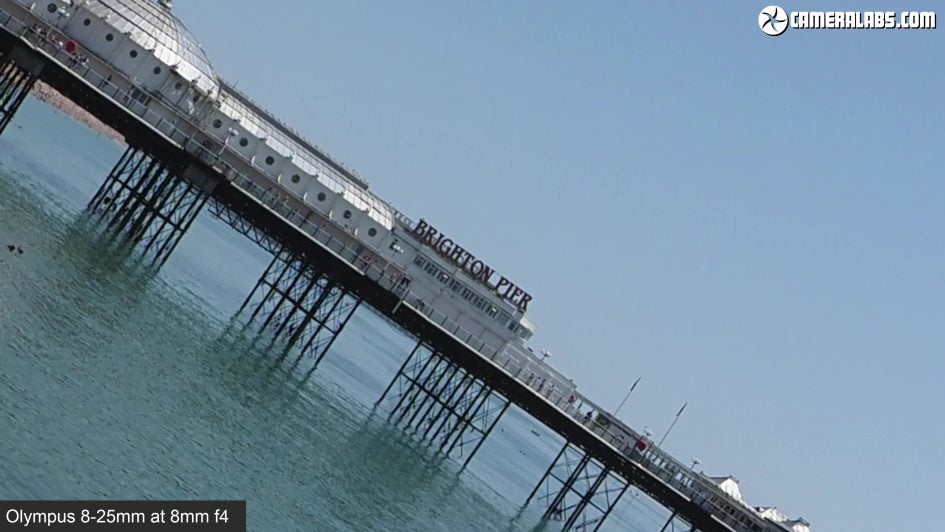
Above: So let’s start with the Olympus 8-25mm at 8mm, and taking a closer look in the middle, where I focused this image, shows the lens behaving well as you’d hope at its maximum aperture, and closing it down shows no benefit.

Above: Moving into the far corner, there’s a minor drop in sharpness, but still respectable quality at the maximum aperture. Closing the aperture gradually to f11 didn’t make any significant difference in this particular test, so the Olympus was performing at its best pretty much out of the gate. I also retested with the focusing area repositioned from the centre to the corner and the results were the same.
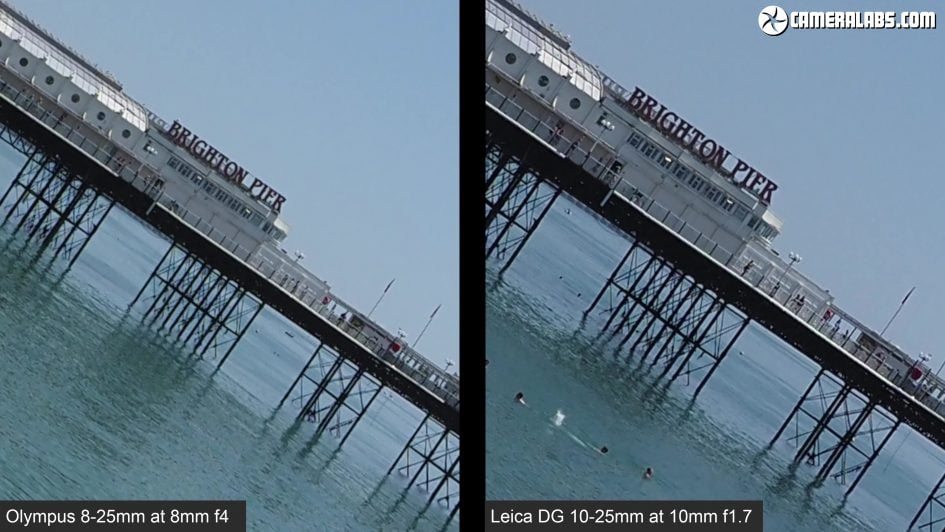
Above: Next, let’s return to the middle of the Olympus 8-25mm image at 8mm f4 on the left and compare it against the middle of the Leica DG 10-25mm on the right at 10mm f1.7. Since that lens starts a little longer, the crop on the right shows a slightly smaller area, but looking at the sharpness of details, I’d say the Leica is looking pretty good out of the gate at f1.7. Indeed when concentrating in the middle, there’s little benefit to closing this lens down.
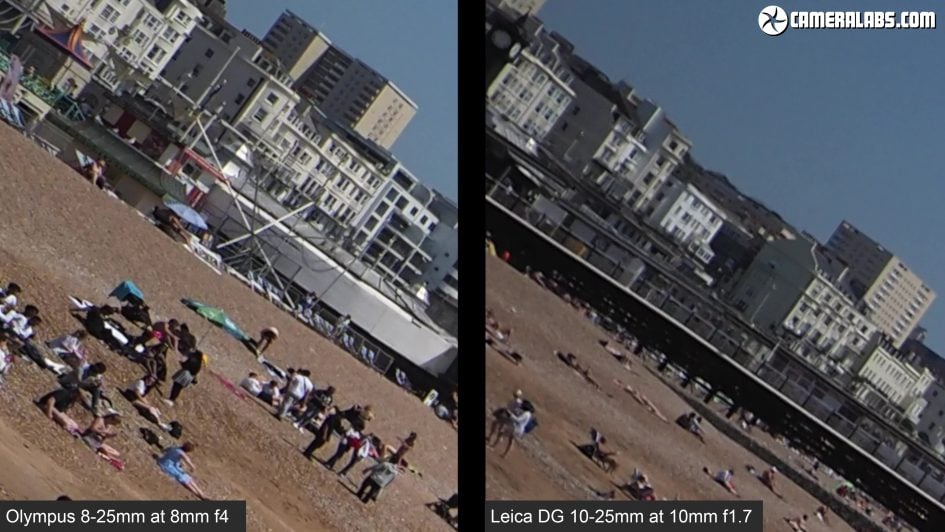
Above: Moving out to the corner and again the longer focal length of the Leica on the right means I’m showing a different part of the pier, but from roughly the same part of the entire frame. With the Leica wide-open to f1.7, there’s quite obvious darkening in the corners due to vignetting. This mostly disappears by f2.8 and at f4 the lens benefits from a mild boost in corner sharpness. I found it improved more at f5.6, but didn’t benefit if I was focused in the corner rather than the middle.

Above: Now for a quick look at the Olympus 8-25 roughly mid-way at 18mm, originally framed for a direct comparison against the 8-18, but I’ve had to reject that due to my 8-18 copy not performing as it should. But I can still show you the shot from the Olympus which at f4 looks fine in the middle…
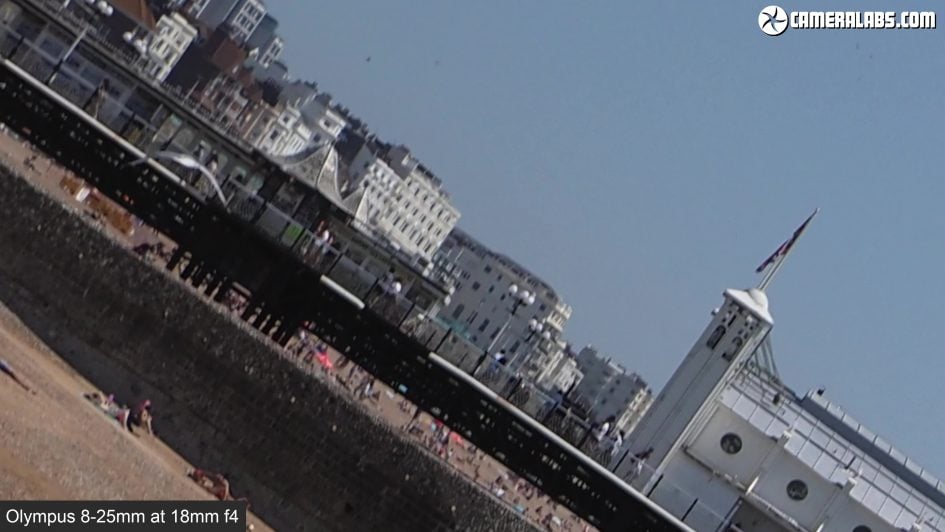
Above:…and out into the corners. As you’ll see this lens performs pretty well right out of the gate at f4 across its entire focal range and doesn’t force you to focus in the corners if you want sharp results in the extremes.

Above: Moving on, let’s check out the Olympus 8-25mm at the long-end, so here it is at 25mm f4, and taking a closer look in the middle again reveals fine details, so no problem there.
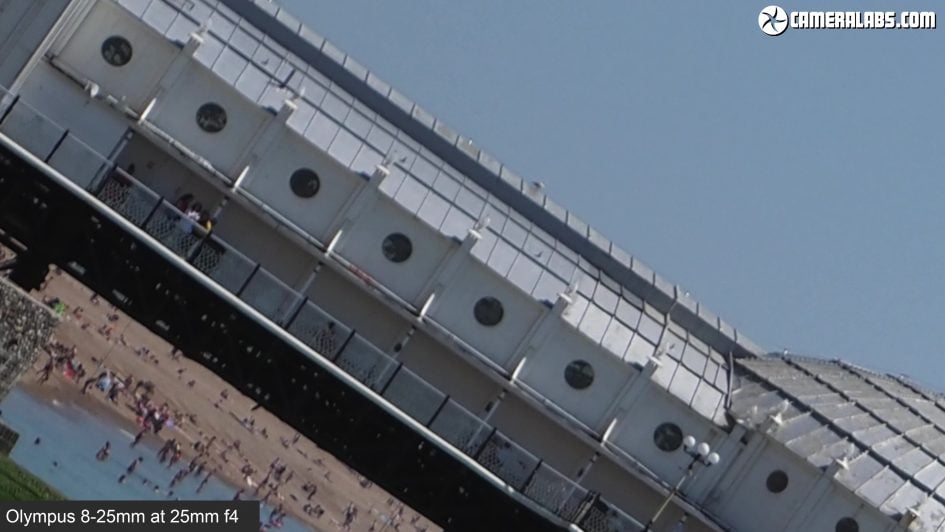
Above: Moving into the corners shows the lens becoming a little soft compared to the middle, but close it to f5.6 and it sharpens up nicely and there’s no benefit to closing any further at least in terms of detail.
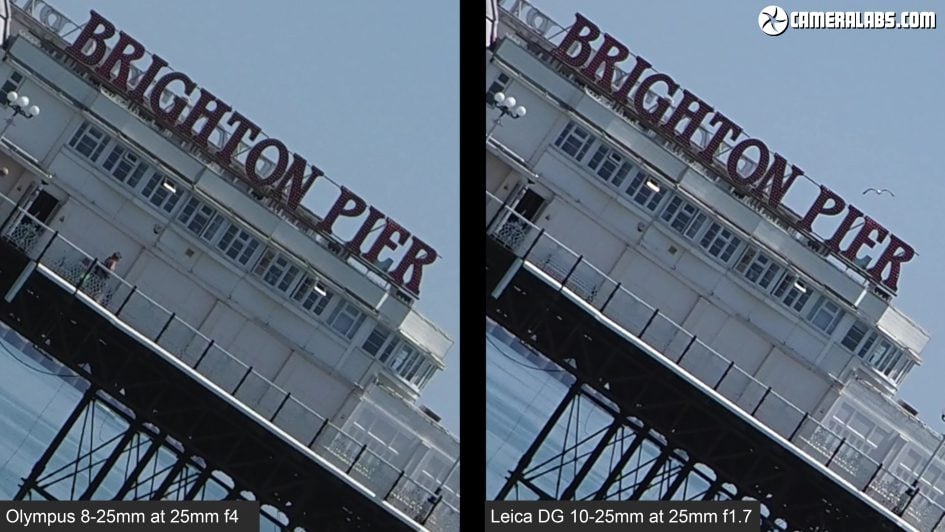
Above: Returning to the middle crop, let’s compare the Olympus 8-25 on the left with the Leica DG 10-25 on the right, both at 25mm and their respective maximum apertures. Yep, that’s f4 on the left and f1.7 on the right but with them both delivering similar levels of resolved detail.
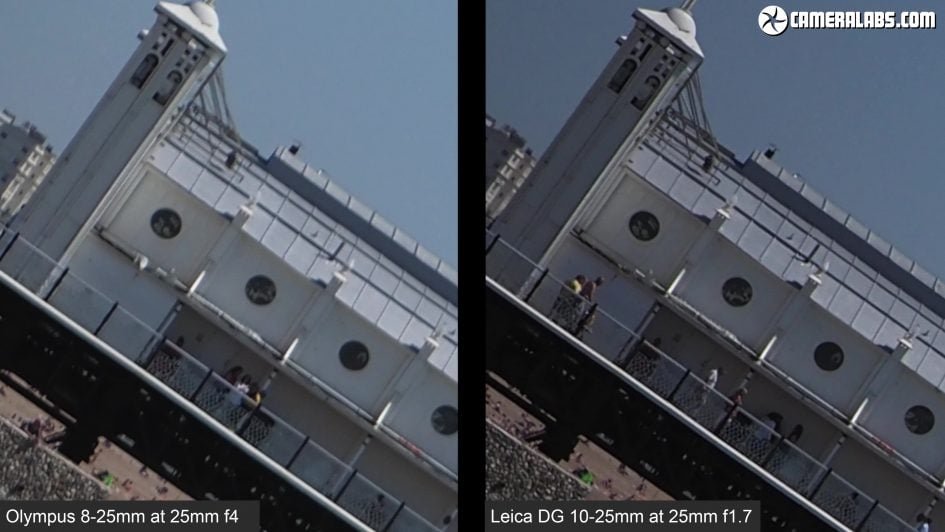
Above: Switching to the corner crops shows the Leica taking a lead in sharpness, albeit with greater darkening in the corners on the Leica due to vignetting at f1.7. Close the Leica to f2.8 and this darkening becomes greatly reduced and there’s also a minor boost in sharpness that by f4 has become crisper overall than the Olympus at the same aperture.

Above: Next for a look at rendering of blurred backgrounds, starting with the Olympus 8-18mm at 25mm f4 and focused quite close to the ornament. Even at close range, a 25mm f4 lens on Micro Four Thirds is never going to deliver a particularly shallow depth of field, and this is the compromise of this particular lens. The bokeh blobs here are also nothing to write home about with some visible outlining and faint onion-ringing.
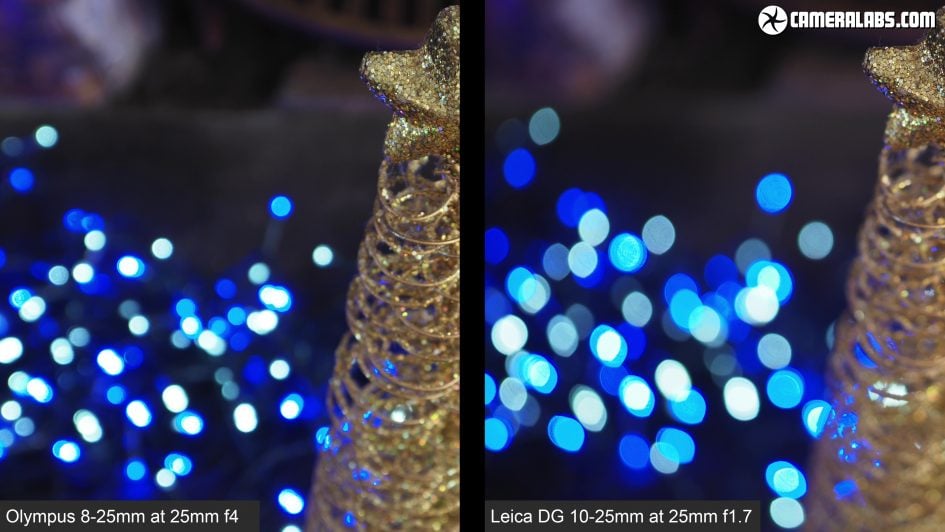
Above: Place the Olympus on the left and the Leica 10-25 on the right, both at 25mm and their respective maximum apertures and unsurprisingly the latter is delivering larger blobs at f1.7, albeit almost all of them rendered as ovals until the aperture is closed to f2.8 or smaller. I’d also say the style of the Leica 10-25 blobs isn’t particularly smooth or outline-free here either.
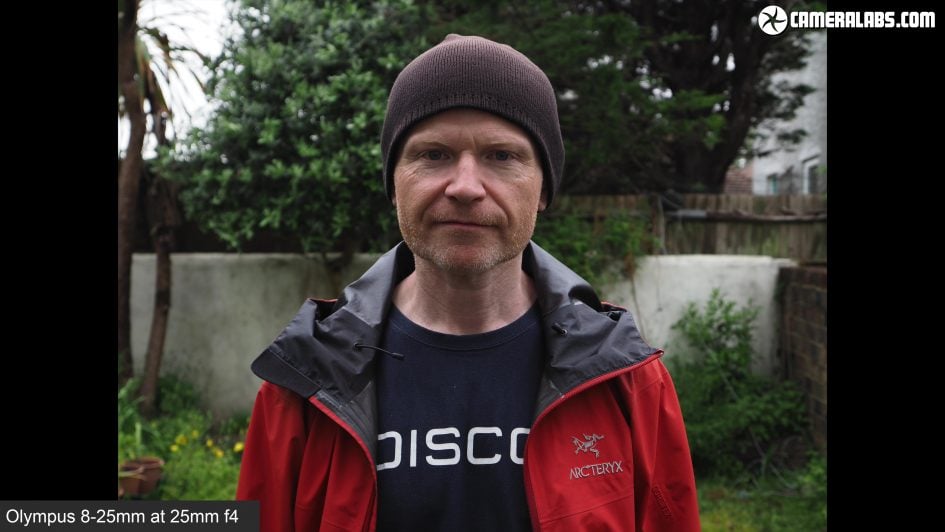
Above: Moving onto portrait distances, here’s the Olympus 8-25 at 25mm f4 where as you’d expect there’s not a great deal of separation with the background.
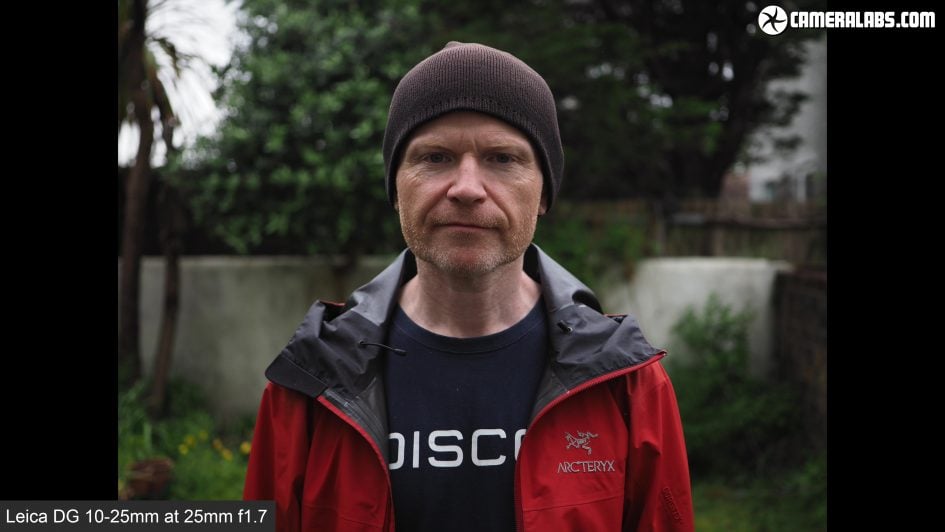
Above: Switching to the Leica DG 10-25 at 25mm f1.7 shows a much shallower depth of field effect, although the background rendering is a little busier than I’d personally like.
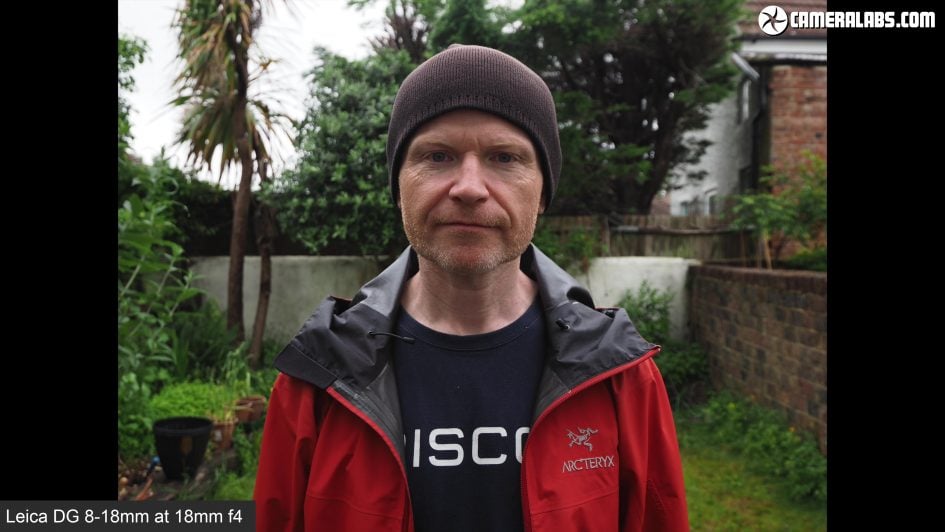
Above: And just for a quick comparison, here’s the Leica 8-18 at 18mm f4 where I’m happy to show the full image to give an idea of what’s possible, just not examine it any closer on my test sample.
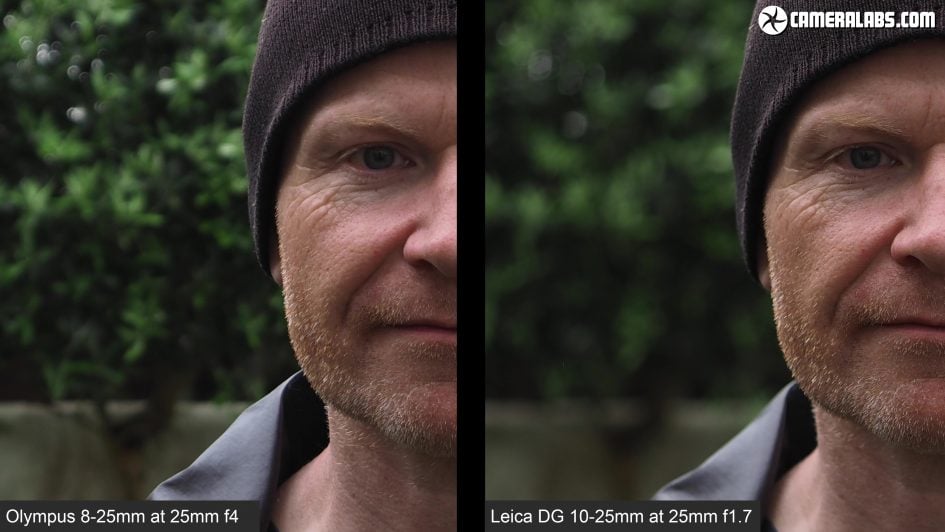
Above: Taking a closer look at the Olympus 8-25 on the left and the Leica 10-25 on the right, shows the Leica is capturing slightly crisper details with a little higher contrast even at their maximum apertures, but again I’m not particularly fond of the background rendering of either lens here. If you’re after pin sharp portraits with creamy backgrounds, there’s loads of great short telephoto primes in the Micro Four Thirds system to choose from, like the fairly affordable Lumix G 42.5mm f1.7.
Moving onto autofocus, I compared the Olympus 8-25 against the Leica DG 10-25 on both the EM1 Mark II and Lumix G9 for photo and movies in my video review at the top of the page, but in summary the Olympus lens focused quickly, quietly and without fuss in my tests on either body, although was faster on the EM1 II than the G9. In terms of focus breathing, all three lenses were virtually bereft of any magnification changes when focusing from the furthest to the nearest and back again at either end of the range. So good news for videographers.
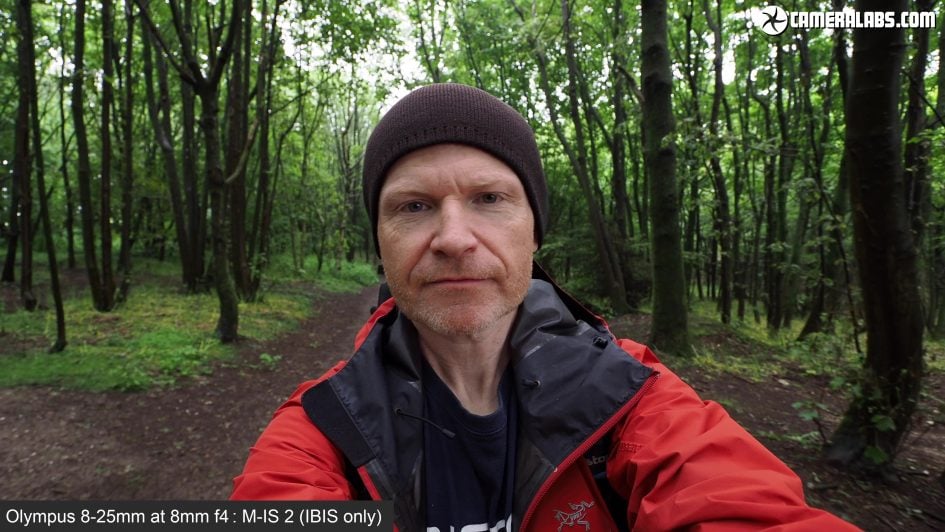
Above: Some owners will want to use these lenses at their wide-end for handheld vlogging, so here’s the Olympus 8-25 at 8mm f4 on the EM1 Mark II with sensor-shift IBIS only. The camera’s doing a good job at stabilising the footage and the 8mm coverage is nice and wide, but as with many wide lenses with IBIS there can be some visible warping in the corners. Some of that can be mitigated by using sensor shift with extra digital stabilisation on the EM1 Mark II, so here’s the same lens at 8mm f4, but with the field of view slightly cropped due to the extra stabilisation process, and while it is tighter, I’d say it is also less distracting in the corners.
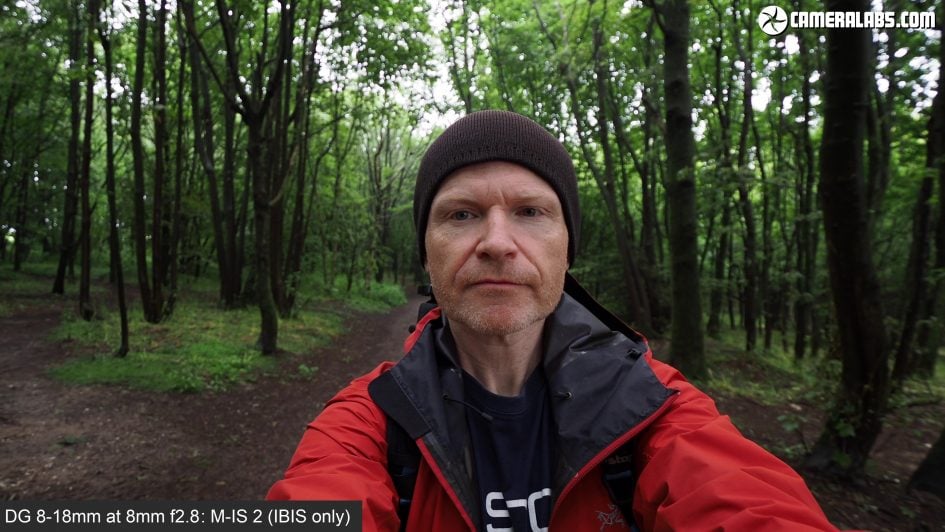
Above: For comparison, here’s the Leica DG 8-18mm at 8mm f2.8 on the EM1 Mark II using sensor-shift IBIS alone. At f2.8 it’s one stop brighter, letting me use a lower ISO and enjoy slightly more blurring in the background while matching the 8mm coverage, but like the Olympus, there’s visible warping in the corners. Again choosing IBIS with extra digital stabilisation incurs a crop, but since the coverage was so wide to start with, it remains usable.
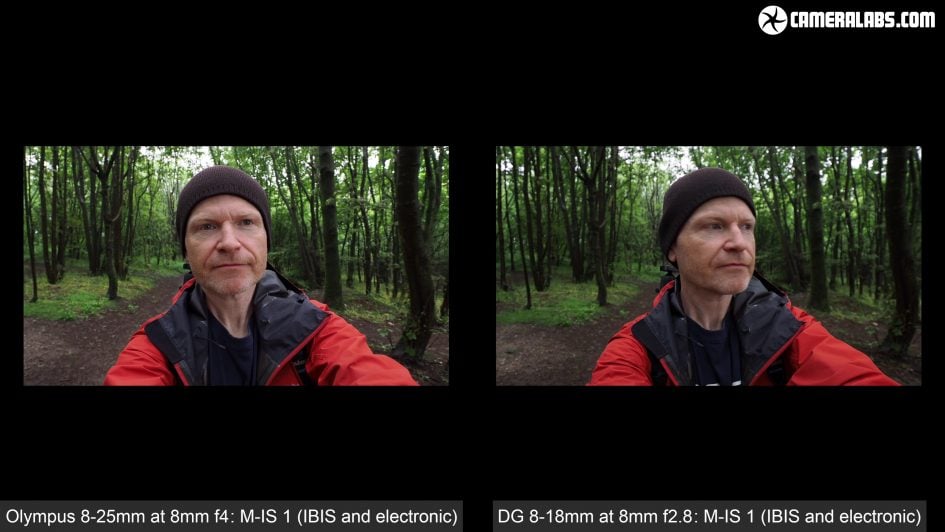
Above: Here’s the Olympus 8-25 on the left at 8mm f4 and the Leica 8-18 on the right at 8mm f2.8, both showing their clips with IBIS and digital stabilisation. Can you see any benefit to the brighter aperture of the Leica here?
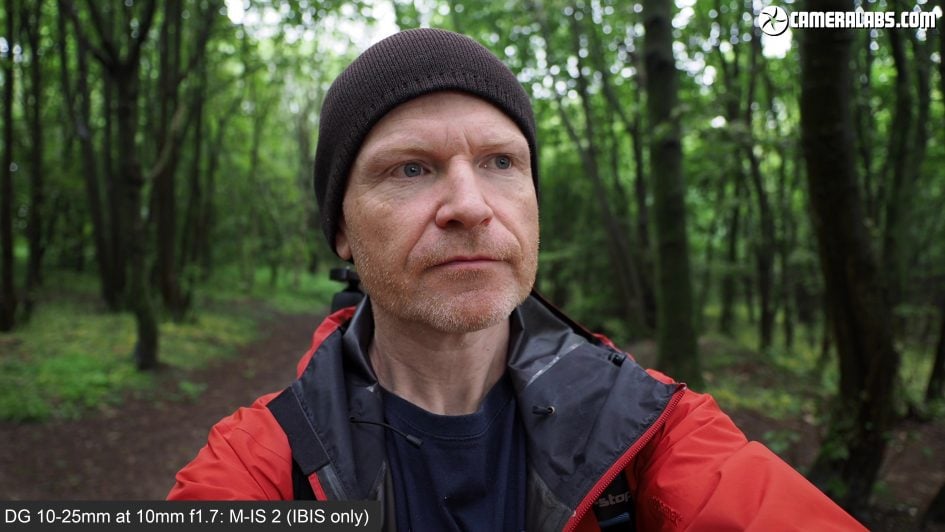
Above: Next here’s the Leica DG 10-25 at 10mm f1.7 on the EM1 Mark II using sensor shift IBIS only and the first thing you’ll notice is the shallower depth of field – and lower noise – thanks to the f1.7 aperture, but while there’s less warping than the Olympus at 8mm, there’s still some visible in the corners. Choose IBIS with extra digital stabilisation and you’ll again crop the image a little. This time any warping has been essentially eliminated, although now the field of view is looking a little tight for handheld vlogging.
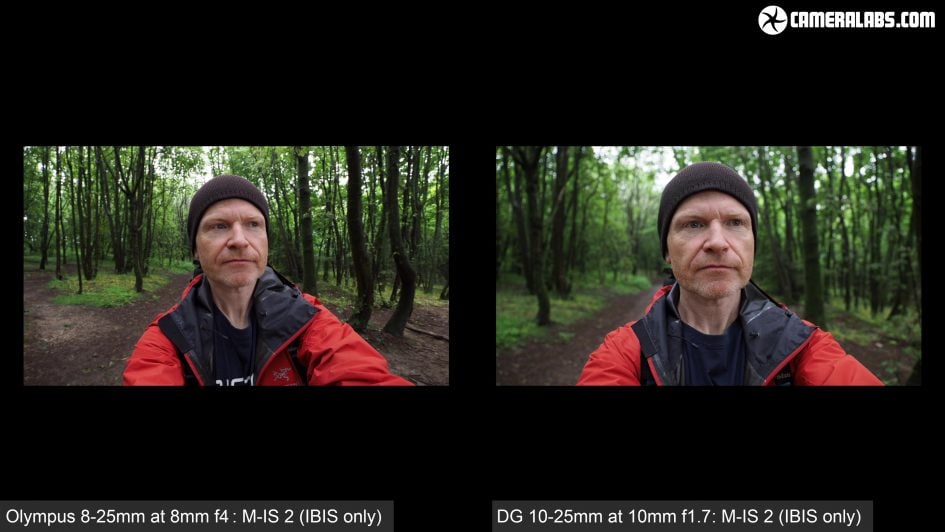
Above: Side by side with the Olympus on the left at 8mm f4 and the Leica on the right at 10mm f1.7 both with IBIS only, you can see the differences in coverage, depth of field and warping.
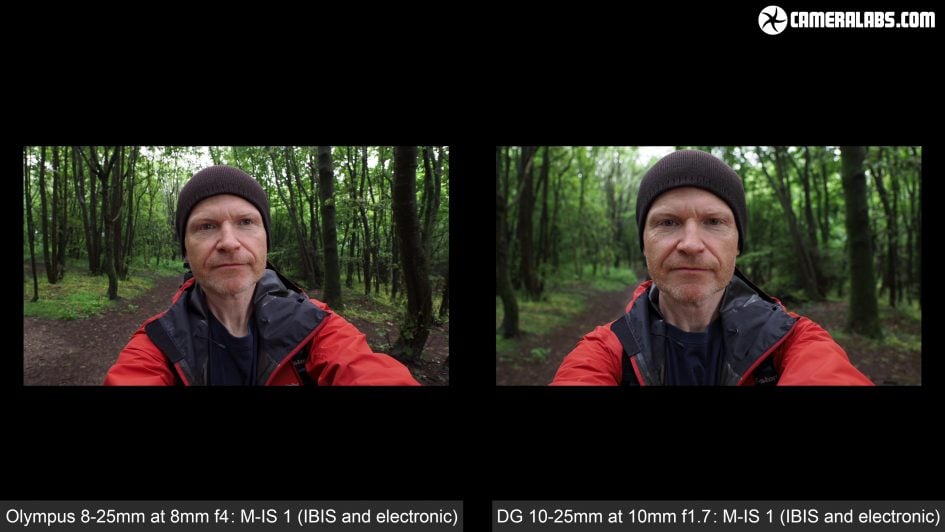
Above: And now for both lenses on the EM1 Mark II with the extra digital stabilisation applied and the subsequent tighter field of view as a result. Do you have a preference between these four clips?
Check prices on the Olympus 8-25mm f4 PRO at B&H, Adorama, WEX UK or Calumet.de. Alternatively get yourself a copy of my In Camera book or treat me to a coffee! Thanks!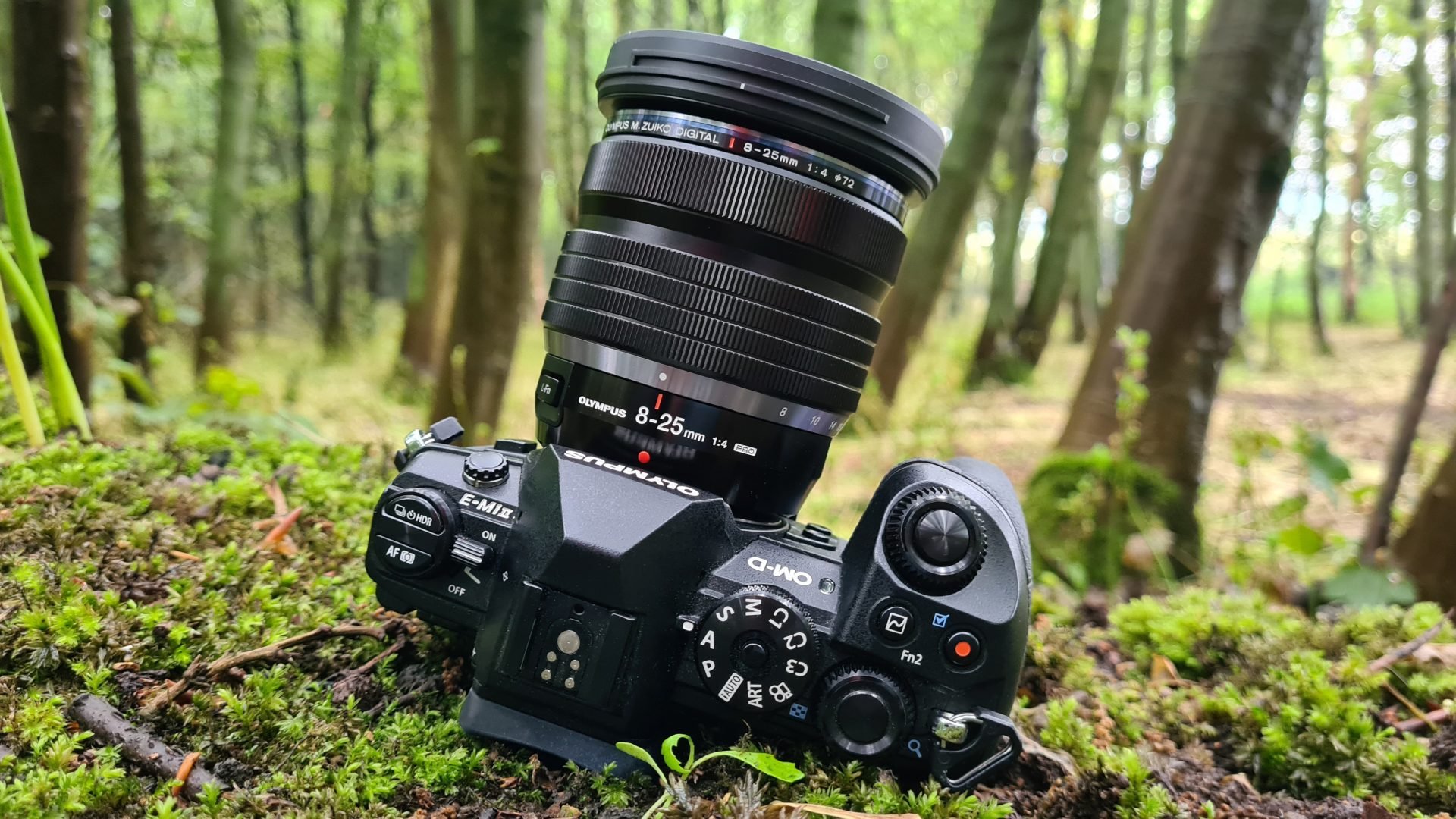
 The Olympus 8-25mm f4 Pro is a fresh and very welcome addition to the Micro Four Thirds system. There’s lots of ultra-wide or standard zooms in the catalogue, but few that effectively cover both ranges. The earlier Leica DG 8-18mm started very wide but often left you wanting to zoom a little longer. Then the Leica 10-25 sacrificed a little at the wide end to extend further while delighting with its bright and constant f1.7 aperture, but this made it a heavy and expensive option for most of us. With the 8-25mm f4 Pro, Olympus has successfully filled the gap between the two Leicas, starting as wide as one and ending as long as the other, but opting for a more modest f4 aperture to keep the size, weight and cost down. The retracting mechanism also allows the lens to shrink to a compact size without getting in the way of operation. The result is a lens that delivers a very flexible range from ultra-wide to standard coverage with useful close-up focusing and a compact size. Sure the f4 focal ratio on Micro Four Thirds means you won’t be enjoying shallow depth-of-field effects unless your subject is very close, but that’s about the only sacrifice to achieve what’s arguably one of the most compelling walkaround lenses in the system. If I had to choose just one lens for general use on a Micro Four Thirds body, the Olympus 8-25mm would be it, and it comes highly recommended.
The Olympus 8-25mm f4 Pro is a fresh and very welcome addition to the Micro Four Thirds system. There’s lots of ultra-wide or standard zooms in the catalogue, but few that effectively cover both ranges. The earlier Leica DG 8-18mm started very wide but often left you wanting to zoom a little longer. Then the Leica 10-25 sacrificed a little at the wide end to extend further while delighting with its bright and constant f1.7 aperture, but this made it a heavy and expensive option for most of us. With the 8-25mm f4 Pro, Olympus has successfully filled the gap between the two Leicas, starting as wide as one and ending as long as the other, but opting for a more modest f4 aperture to keep the size, weight and cost down. The retracting mechanism also allows the lens to shrink to a compact size without getting in the way of operation. The result is a lens that delivers a very flexible range from ultra-wide to standard coverage with useful close-up focusing and a compact size. Sure the f4 focal ratio on Micro Four Thirds means you won’t be enjoying shallow depth-of-field effects unless your subject is very close, but that’s about the only sacrifice to achieve what’s arguably one of the most compelling walkaround lenses in the system. If I had to choose just one lens for general use on a Micro Four Thirds body, the Olympus 8-25mm would be it, and it comes highly recommended.



